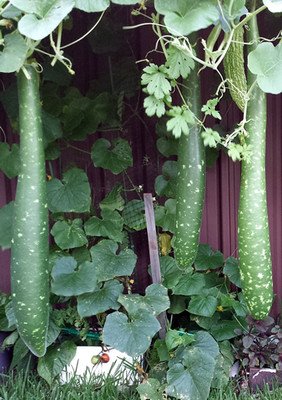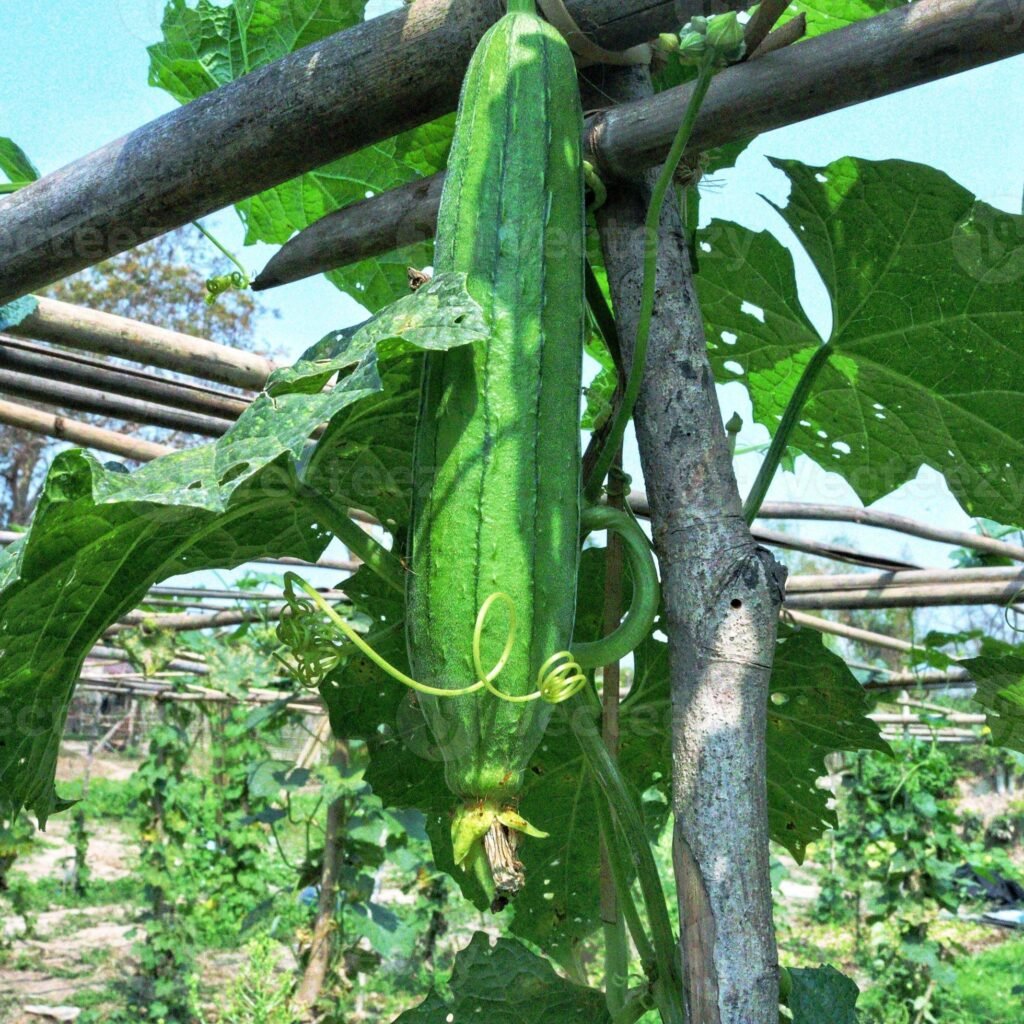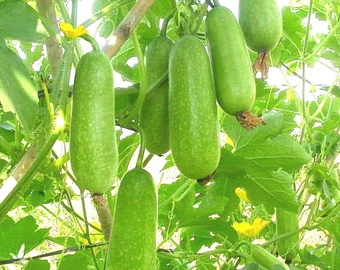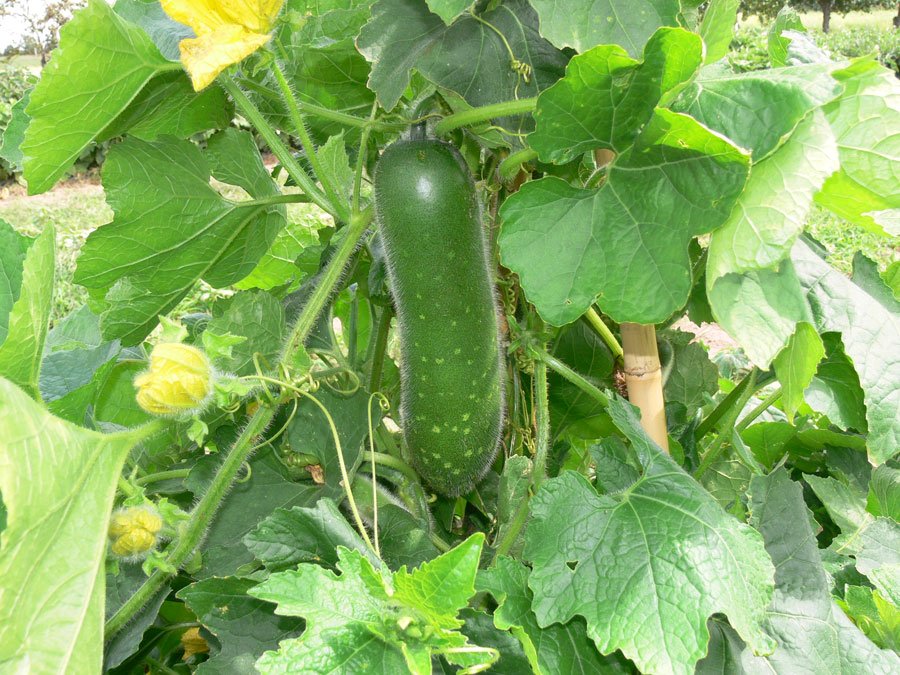If you’re a fan of discovering unique and nutrient-rich vegetables, the fuzzy melon deserves a place on your radar. Also known as mo qua, Chinese hairy gourd, or winter melon’s cousin, this fascinating vegetable has been a staple in Asian cuisine for centuries. But lately, it’s creating buzz across the United States among health-conscious home cooks, gardeners, and chefs who are always looking for fresh, farm-to-table produce with global flair.
Fuzzy melon’s tender texture, mild flavor, and versatility make it an excellent ingredient for soups, stir-fries, and stews. Even better, it’s packed with vitamins, minerals, and fiber, supporting everything from digestion to immunity. As America’s culinary scene embraces global ingredients, this Asian gourd is quickly becoming a favorite in both restaurants and home gardens.
In this in-depth guide, we’ll explore what makes fuzzy melon special—its origins, nutritional benefits, growing tips, and mouthwatering ways to cook it for American-style meals.
1. What Is Fuzzy Melon?

Despite its name, the fuzzy melon isn’t actually a fruit like cantaloupe or watermelon—it’s a vegetable from the gourd family. Botanically known as Benincasa hispida var. chieh-qua, the fuzzy melon is closely related to the winter melon but is harvested while still immature, giving it a softer texture and sweeter taste.
The skin of the fuzzy melon is light green and covered in a soft, fine fuzz—hence the name. Inside, the flesh is crisp and white with tiny, undeveloped seeds. When cooked, it becomes tender and slightly creamy, absorbing the flavors of whatever it’s paired with.
Native to China and Southeast Asia, the fuzzy melon has long been prized in traditional cuisines and herbal medicine. Today, it’s grown not only in Asia but also in American home gardens, particularly in California, Texas, and Florida, where the warm climate supports its growth beautifully.
2. Fuzzy Melon’s Rise in American Kitchens
With Americans increasingly exploring international foods, fuzzy melon is finding its way into grocery stores, farmers’ markets, and Asian-inspired kitchens across the country. Chefs appreciate its versatility, while home cooks love how easy it is to blend into both traditional Asian dishes and modern American recipes.
You’ll now find fuzzy melon featured in:
- Farm-to-table restaurants focused on global ingredients
- Health food stores promoting low-calorie, nutrient-dense produce
- CSA (Community Supported Agriculture) boxes, offering rare vegetables for adventurous eaters
Fuzzy melon’s subtle flavor and absorptive texture make it perfect for soups, curries, and sautés. It’s also a favorite for those following plant-based diets, offering a low-calorie, hydrating base for hearty meals.
3. Nutritional Benefits of Fuzzy Melon

Don’t be fooled by its humble appearance—this mild, pale-green vegetable is a nutrient powerhouse. Fuzzy melon is rich in vitamins, antioxidants, and minerals that contribute to overall wellness.
a. Low in Calories, High in Nutrition
One cup of cooked fuzzy melon contains:
- Fewer than 25 calories
- Almost no fat
- High water content (over 90%)
- Good amounts of Vitamin C, potassium, and fiber
This makes it an excellent food for hydration, digestion, and weight management.
b. Immune Support
Fuzzy melon’s Vitamin C content helps strengthen immunity, promotes collagen production, and supports healthy skin.
c. Digestive Health
Thanks to its high fiber and water content, fuzzy melon aids digestion, reduces bloating, and helps maintain a healthy gut.
d. Heart Health
Potassium in fuzzy melon helps regulate blood pressure, while its fiber content supports healthy cholesterol levels.
e. Detoxification and Hydration
Fuzzy melon is known for its natural diuretic properties, helping flush out toxins and maintain hydration—perfect for summer months or post-workout meals.
4. Growing Fuzzy Melon in the U.S.
Fuzzy melon isn’t just a culinary delight—it’s also a rewarding crop for American gardeners. Whether you have a backyard, raised bed, or greenhouse, growing this Asian vegetable is easier than you might think.
a. Climate and Conditions
Fuzzy melon thrives in warm, sunny environments with plenty of space to climb. It prefers:
- Temperature: 70°F–90°F
- Soil: Well-drained, loamy soil with a pH between 6.0–7.0
- Sunlight: Full sun for at least 6–8 hours daily
It’s perfect for southern states like Florida, Texas, and California, though northern gardeners can grow it successfully during warm summers.
b. Planting Tips
- Start seeds indoors in biodegradable pots 3–4 weeks before the last frost.
- Transplant outdoors once the soil warms to at least 65°F.
- Space plants about 2 feet apart and provide a trellis for climbing vines.
- Water deeply once or twice a week, keeping the soil evenly moist.
- Fertilize with compost or balanced organic fertilizer every 2–3 weeks.
c. Harvesting
Fuzzy melons are ready to harvest about 60–70 days after planting. Pick them while young—about 6–8 inches long—before the skin hardens. The younger the fruit, the more tender and flavorful it will be.
5. How to Cook Fuzzy Melon: Delicious American-Style Recipes

Fuzzy melon’s neutral flavor and soft texture make it a versatile ingredient that adapts well to Western and Asian fusion dishes. It’s excellent for soups, stir-fries, and even baked casseroles.
a. Classic Asian-Style Dishes
- Fuzzy Melon Soup: Simmer diced fuzzy melon with garlic, ginger, and vegetable broth. Add tofu, shrimp, or chicken for a protein boost.
- Stir-Fried Fuzzy Melon: Sauté thin slices with garlic, soy sauce, and sesame oil for a light, flavorful side.
- Steamed Fuzzy Melon with Mushrooms: Combine with shiitake mushrooms and soy-based dressing for a healthy meal.
b. American Fusion Ideas
- Fuzzy Melon Veggie Stew: Add chopped fuzzy melon to your classic vegetable stew for extra texture and hydration.
- Fuzzy Melon Casserole: Mix diced fuzzy melon with potatoes, onions, and cheese for a comforting baked dish.
- Grilled Fuzzy Melon: Slice into thick rounds, drizzle with olive oil, sprinkle with salt and herbs, and grill until tender—a unique, healthy barbecue option.
- Smoothies and Juices: Blend fuzzy melon with cucumber, apple, and mint for a refreshing detox drink.
c. Cooking Tips
- Always peel off the fine fuzz before cooking.
- Avoid overcooking—fuzzy melon becomes mushy quickly.
- Season lightly; its delicate flavor pairs best with garlic, ginger, soy sauce, or lemon.
6. Fuzzy Melon vs. Winter Melon: What’s the Difference?
These two melons look similar but differ in maturity, taste, and texture.
| Feature | Fuzzy Melon | Winter Melon |
|---|---|---|
| Harvest Stage | Immature (young) | Fully matured |
| Texture | Tender, soft, and mild | Firm and dense |
| Flavor | Sweet and delicate | Neutral and earthy |
| Culinary Use | Quick-cooking soups and stir-fries | Long-simmered soups and stews |
| Availability | Summer | Fall and Winter |
For most American cooks, fuzzy melon is easier to prepare—it requires less cooking time and fits perfectly into light, refreshing meals.
7. Health Benefits Backed by Tradition and Science

In traditional Chinese medicine, fuzzy melon has been used for centuries to cool the body, support digestion, and detoxify. Modern nutrition research backs up many of these claims:
- Anti-inflammatory properties: Helps soothe internal inflammation.
- Hydration boost: Keeps the body hydrated in hot weather.
- Supports weight management: Low in calories and rich in fiber.
- Improves skin health: Vitamin C promotes collagen and reduces oxidative stress.
Adding fuzzy melon to your weekly diet can help enhance overall well-being—especially during warmer months when light, water-rich foods are most beneficial.
8. Sustainability and Home Gardening Appeal
One reason fuzzy melon is gaining traction in the U.S. is its sustainability. It’s a low-maintenance, high-yield plant that requires minimal fertilizer and water once established. Its climbing vines also make great use of vertical garden space, ideal for eco-conscious urban gardeners.
Moreover, because fuzzy melons can be harvested early and grow quickly, they’re perfect for succession planting—giving you fresh produce throughout summer.
Local farms and gardeners are increasingly growing fuzzy melon as part of sustainable Asian vegetable collections, making it more accessible in American markets.
9. Where to Buy Fuzzy Melon in the U.S.

You can find fresh fuzzy melons in:
- Asian supermarkets like 99 Ranch Market or H Mart
- Local farmers’ markets during summer months
- Online seed stores such as Johnny’s Selected Seeds or Baker Creek Heirloom Seeds (for home gardeners)
- Specialty produce stores that carry global vegetables
When shopping, choose smooth, light-green melons with soft fuzz and no blemishes. Avoid overripe ones with hard skin—they tend to be less flavorful.
10. Why Fuzzy Melon Deserves a Spot in Every American Kitchen
In an age when Americans are increasingly open to global flavors, the fuzzy melon fits right in. It’s easy to cook, highly nutritious, and adds a refreshing twist to familiar dishes. From farm-to-table dining to backyard gardening, this Asian super-vegetable offers a sustainable, healthful way to diversify your meals.
Whether you’re simmering it in soup, tossing it in a stir-fry, or grilling it as a side dish, the fuzzy melon delivers gentle sweetness, comfort, and nutrition in every bite.
So next time you’re shopping for something new and exciting, skip the usual zucchini or cucumber—pick up a fuzzy melon instead, and bring a touch of Asian-inspired wellness to your American kitchen.






Leave A Comment